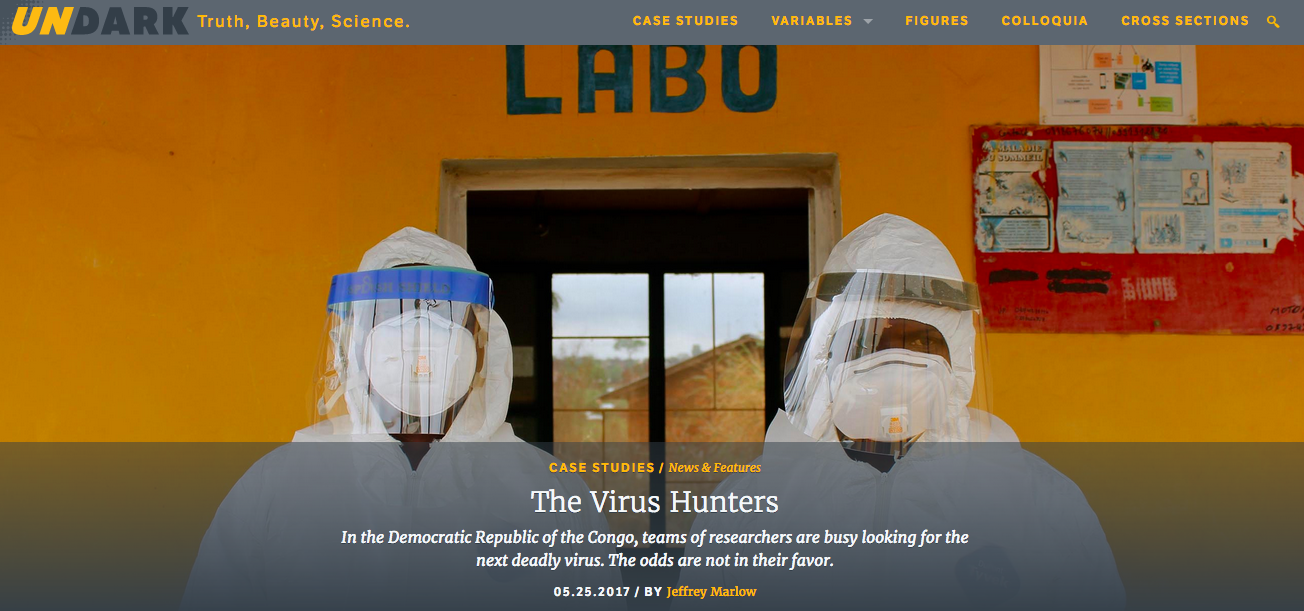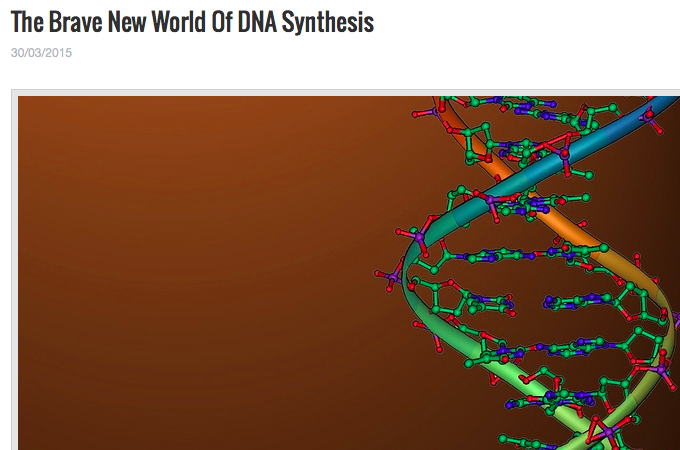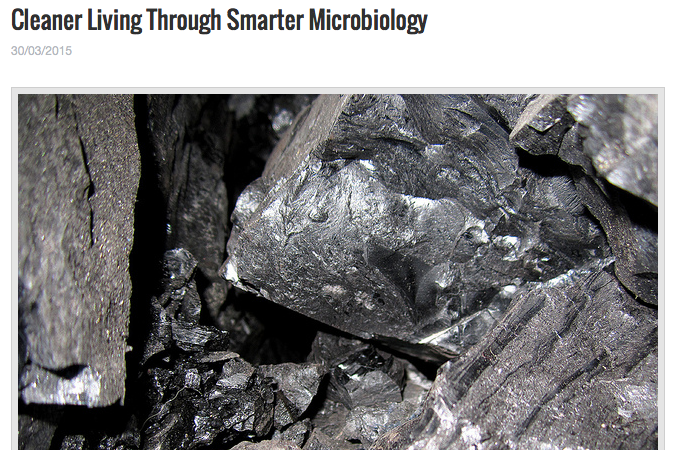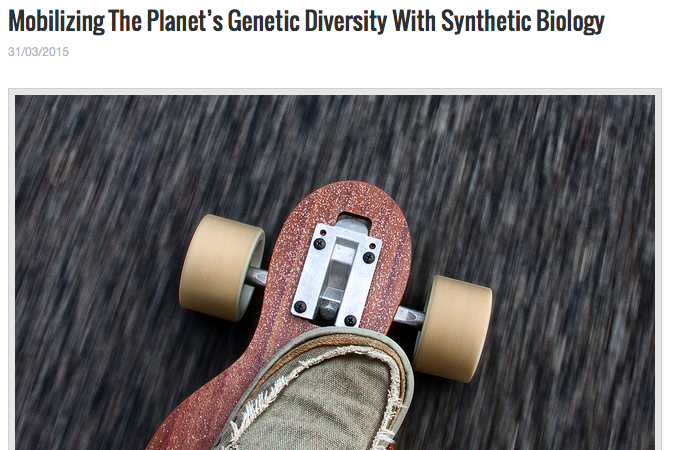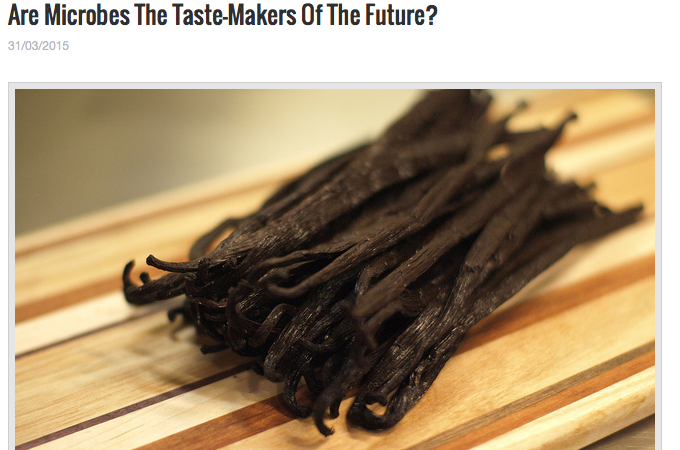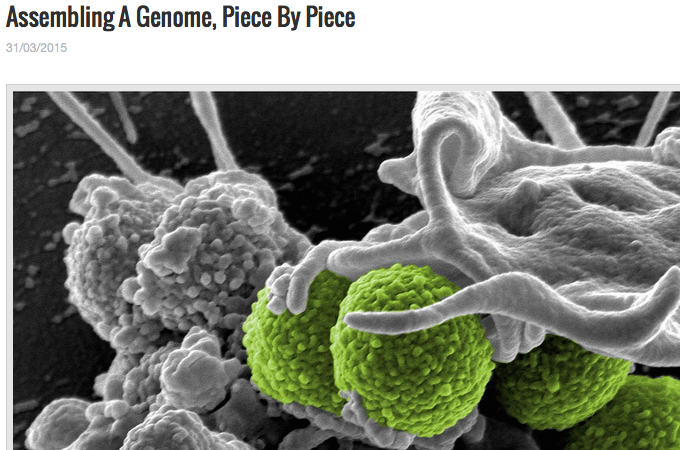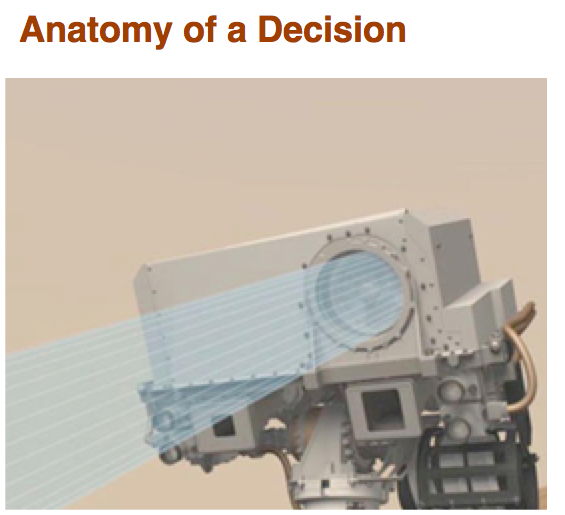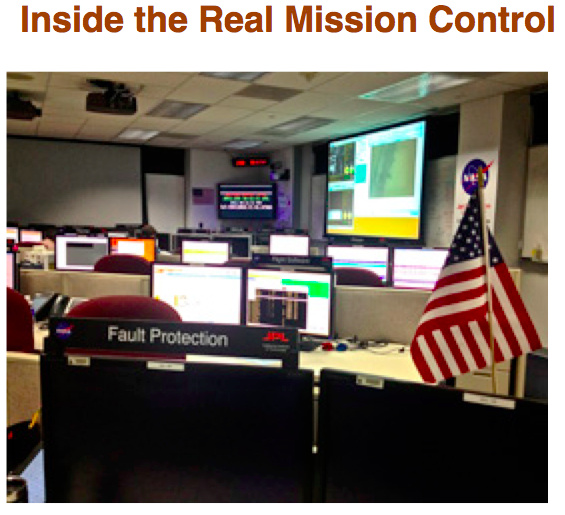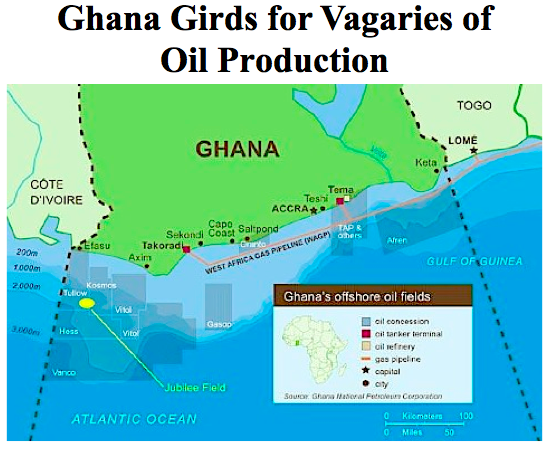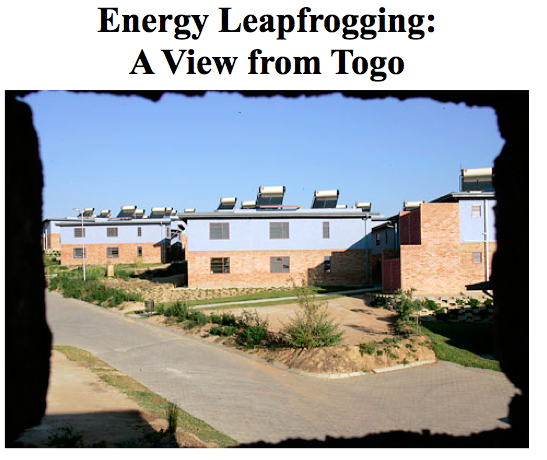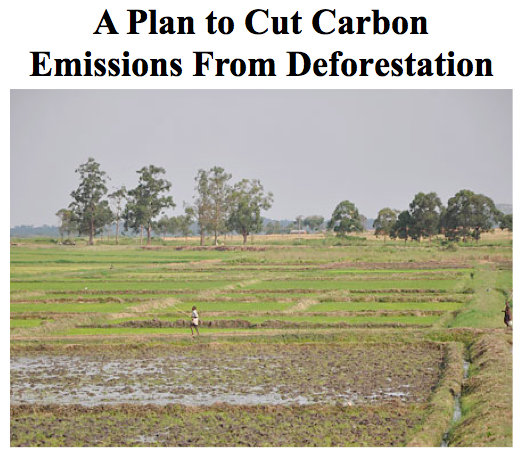The new yorker // Shedding Light on Untouchable Sea Creatures
The gelatinous organisms of the open ocean present a challenge for scientists: they’re often too fragile to sample, leaving us with little knowledge about how they move, behave, and interact with their surroundings. And yet, it seems that these creatures play key roles in a vast and understudied ecosystem, mixing nutrients throughout the water column and transporting organic carbon to the seafloor. [This article] features a new tool - and the engineer behind it - that turns the gelata’s “hardly-there” consistency into an unexpected strength, revealing remarkable biological structures in the process. An excerpt:
“Countless life-forms float, ethereal and gelatinous, between the sunlit shallows and the murky depths. Their daily migrations stir the ocean as much as wind or tides, and their falling corpses and waste feed life on the seafloor. But, because we lack the delicate technology to get to know them, we know vanishingly little about their behavior, their place in the food web, even their size and shape. Through the years, researchers have tried to engineer a softer touch—for example, with cages that fold underwater; foamy fingers controlled by hand-worn sensors; and futuristic, noodle-like strands that can cradle a creature—but even these innovations run the risk of reducing jellyfish to confetti. The very nature of these slippery creatures resists our advances; we can’t hold them lest we crush them in the embrace. How are you supposed to understand an animal that you can’t touch?
Kakani Katija, who leads the Bioinspiration Laboratory at the Monterey Bay Aquarium Research Institute (MBARI), originally set out to study space flight. She grew up in Portland, Oregon, and spent many evenings watching “Star Trek” reruns. She was enchanted by the show’s earnest spirit of exploration: the crew of the Starship Enterprise traversed the cosmos, “meeting aliens, and trying to communicate with them and learn from them,” Katija told me. By the time Katija entered a graduate program in aeronautics at Caltech, however, she was growing disillusioned with the private space industry. She studied with the bioengineer John Dabiri, who was researching how jellyfish move, in hopes of finding another career path. She understood that water moves around sea creatures in the same way that air flows around airplane wings, and she used an aerospace technique called particle image velocimetry, or P.I.V., to mathematically model both the water and the jellyfish. In 2009, her research showed how jellyfish and their soft-bodied relatives, dubbed gelata by the MBARI scientist Steven Haddock, collectively churn the ocean, like millions of spoons stirring in unison.”
The new yorker // Exploring the oceans by remote control
Traditionally, exploring the ocean has been quite an undertaking, with enormous financial, logistical, and technical barriers to entry. In recent years, however, improvements in satellite bandwidth and ship-board technologies have enabled remote participation via telepresence. [This article] tells the story of telepresence through an expedition led by a researcher from shore, revealing the benefits and challenges of the approach. More fundamentally, how does it change the nature of the enterprise? What is gained, lost, and altered when we explore by remote control? An excerpt:
“In August of 2017, a research ship was sampling a recently discovered methane seep off the coast of Malibu. From my office, in Cambridge, Massachusetts, I joined the live stream, to request samples. The hum of office activity didn’t exactly evoke deep-sea adventure. Compressed by streaming-video codecs, the microbial mats had lost their spectral glow. Spreadsheets and heavily edited manuscript drafts filled my other monitor, suggesting a false equivalence that, in a way, cheapened what I knew to be a remarkable scene at the bottom of the sea. “The desirability of something is inversely related to its ease,” Liberman told me. To be sure, more data seen by more people will lead to better theories; a new species remains a remarkable discovery whether it’s seen through a porthole or a browser window. All the same, I couldn’t help feeling a little melancholy about a future in which many marine scientists rarely see the ocean, and in which robotic emissaries do jobs that were once risky, wondrous, and embodied.
How fundamental is in-person activity to exploration? When Neil Armstrong overrode the autopilot to guide the Apollo 11 lunar module to safety, he flew on instinct, deftly targeting scientifically valuable terrain while managing a dwindling fuel supply. When the first humans arrive on Mars, they will already have mapped their landing site with satellite imagery; a flotilla of robotic rovers will likely have preceded them. Eventually, technology may cleave adventurism from exploration altogether. Perhaps the solar system will be explored by R.O.V. operators wielding joysticks on Earth. Through telepresence, our senses will extend out into the universe, and more of us will join in the adventure. And yet the meaning of exploration will have changed.”
The new yorker // A Whale’s Afterlife
What happens to a whale when it dies? [This article] explores the people and science behind Rosebud the whale, which was sunk for scientific purposes after it washed ashore in San Diego in 2011. With such a dramatic pulse of food arriving on the seafloor, an oasis blooms: sharks, hagfish, crabs, and fish swoop in first, followed by dense microbial mats and bone-eating worms. The chemosynthetic habitat that develops may help certain species expand their range to more stable habitats like methane seeps or hydrothermal vents. An excerpt:
“We knew, broadly, what had happened in the preceding three years. For denizens of the seafloor, a whale fall is like a Las Vegas buffet—an improbable bounty in the middle of the desert. Rosebud had delivered about a thousand years’ worth of food in one fell swoop. The first animals to pounce had been scavengers, such as sleeper sharks and slimy, snake-like hagfish. In the course of about six months, they had eaten most of the skin and muscle. Inevitably, the scavengers had scattered pieces of flesh around the whale carcass, and native microbes had multiplied quickly around those scraps. Their feeding frenzy, in turn, had depleted oxygen in the seafloor’s top layers, creating niches for microbes that could make methane or breathe sulfate.
As Rosebud came into view, we saw colorful microbial carpets light up the screens—plush white, yellow, and orange mats, each a community of microbes precisely tuned to their chemical milieu. The whale’s towering rib cage had become a cathedral for worms, snails, and crabs, which grazed beneath its buttresses. A few hungry hagfish slithered through the skull’s eye sockets. When the cameras zoomed in, we saw that the bones were covered in red splotches. Rouse leapt from his chair and rushed to the monitors for a closer look: he suspected that the red tufts were colonies of remarkable bone-eating worms called Osedax, which had only just recently been described in a rigorous scientific study.”
Scientific American // Team Players
In this November 2018 feature article, Dr. Marlow and Dr. Rogier Braakman share the growing consensus among microbiologists that interactions among different organisms - not winner-take-all individualism - signifies the dominant mode of life on Earth. They blend journalistic reporting and explanations of their own research to provide readers with wide-ranging context and caveats; ultimately, they demonstrate that microscale interactions enable new modes of metabolism, drive evolution, and control biogeochemical cycles on a global scale. The final paragraph is excerpted here:
“We still have much to learn about the microbial communities that underlie the natural world and the role of collaborations. The results to date suggest that close metabolic partnerships drive evolutionary dynamics and open up vast new realms for colonization. But researchers have only just started looking at interactions beyond the microscopic scale, and placing these new findings into context in the real world continues to be a major challenge. How many species can interact in a meaningful way? How do the general principles shaping these interactions change in different environments or at different scales of space and time? A dense web of interacting microbes might mean that human-caused environmental influences could ripple through the entire network and lead to worldwide consequences we cannot yet anticipate. Continuing to decode these microbial networks is crucial as we enter an era of dramatic global change.”
Undark Magazine // The High Seas Are Being Exploited. Exploration Must Keep Pace.
In [this op-ed], Dr. Marlow argues that recent UN discussions about establishing a framework for conserving areas of the high seas are a promising development for the scientific and environmentalist communities. An excerpt:
"As we enter, complicit, into the “sixth extinction,” we are influencing biomes across the planet before we understand them, precluding the opportunity to catalog, preserve, appreciate, and utilize the full range of Earth’s biodiversity. This pattern extends to the high seas, and as the U.N. develops a new legal framework for their conservation, the marine science community has a critical role to play. We must share the scientific stories of these waters — the engines of our planet that support immense biodiversity and critical climate sustaining processes — emphasizing that protecting the high seas is a boon rather than a burden.
Accelerating scientific exploration, to survey both imminently threatened ecosystems and unseen wonders, will start to fill in the blank spaces on the map. Given the accelerating pace of high seas exploitation, the opportunity cost of doing nothing — a whale nursery gone unprotected, or a powerful antibiotic gone undiscovered — would be an immense and irreversible loss. There are simply too many remarkable discoveries on the horizon, and building a strong and scientifically robust basis for conservation will empower future generations to enjoy their benefits."
Undark Magazine // The Virus Hunters
This [feature] follows an intrepid group of researchers in the Democratic Republic of the Congo as they trace the ecology of potentially dangerous viruses among different animal populations. From bat caves to bonobo sanctuaries to hospitals, the team is working to understand virus distributions and prevent spillover events that could lead to a pandemic. But in a notoriously under-resourced country like the DRC, the challenges - both scientific and logistical - often seem insurmountable.
In coordination with the release of this article, Dr. Marlow participated in a [Reddit Ask Me Anything] and was interviewed for the [Undark podcast], hosted by former NYT Science Times editor David Corcoran
Discover Magazine // Contributing Writer
At Discover Magazine, Dr. Marlow wrote weekly articles about the science that is pushing the boundaries of biology, from the deep sea to outer space to the brave new world of synthetic biology.
Synbiobeta // special series on DNA Synthesis
The confluence of affordable sequencing, DNA synthesis, and increasingly complex synthetic biological techniques is re-shaping applied microbiology. This series checks in on several of the companies leading the charge as they build the future of industrial production and basic research.
Martian diaries // Exclusive access inside Mars Science Laboratory Mission Control
For the first few months of the Mars Science Laboratory mission's primary phase, Dr. Marlow was granted exclusive access to mission control at the Jet Propulsion Laboratory. He worked alongside the science team to describe the mission planning process and share some initial results. A selection of the fourteen resulting articles is provided below, but all can be found [here].
The New York Times // Green, Inc. // Environmental Reporting Around the World
Environmental, economic, political, and social interests are converging rapidly as hydrocarbon production expands among nontraditional players and alternative energies become cost-competitive, fueled by technological ingenuity and local, off-the-grid needs. This extended series for The New York Times offers a sense of how this multi-pronged dynamic is affecting communities around the world. A selection is provided below, but all articles can be found [here].
Selected Other Projects
WIRED Online // [Ski Racing Science]
Vision Magazine // [Ocean Exploration: The Deep Space Age]
WIRED Online // [Ai Weiwei's Technological Future]
Slate // [The Biggest Risk of Exploration Today is Carpal Tunnel]
The Christian Science Monitor // [Haitian Music Schools]
The New York Times // [On the Ground With Jeffrey Sachs]
Geographical Magazine // [Capital Decisions in South Sudan]
Earth Island Journal // [Dangers of The Jellyfish Oceans]
Selections from Dr. Marlow’s journalistic work have been taught in science writing courses at Michigan State University, Western Washington University, and the University of Maryland.







